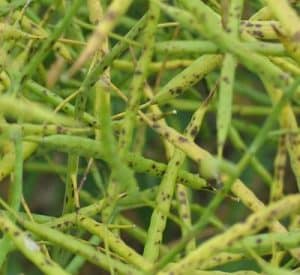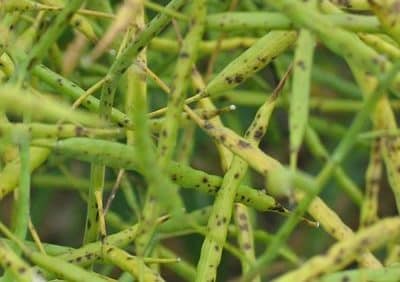Swath timing should always be based on the stage of plants that will contribute the most to yield. Plants senescing early due to disease will not likely produce many viable seeds, so a decision to swath early because of these dying plants can actually make the situation worse. It cuts yield potential for healthy plants.
Don’t let your eyes focus on only the prematurely maturing or dying patches.

One exception where early swathing could provide an economic benefit is the case of severe alternaria black spot — where pods are at high risk of infection and early shattering. In general, infected pods will shatter more easily with this disease, so plants moving in the wind may be more susceptible to shattering losses. Also, as the swathed crop dies down, spread of alternaria will slow down — hopefully stopping this disease from infecting pods.
Other diseases rarely warrant early swathing. In the case of blackleg, sclerotinia stem rot and clubroot, base the swath timing decision on healthy plants that will contribute to yield.
Further reading:
Swath timing: Plant population and seed colour change
Cut later for higher yields (incl data)

